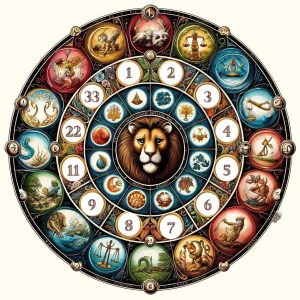- Introduction: Extraterrestrial Life: What Leading Scientists Believe
- The Drake Equation: More Like a Galactic Guess
- Water, Water, Everywhere!
- Goldilocks Planets: Not too hot, not too cold
- Microbial Life: The Tiny Space Pioneers (Extraterrestrial Life)
- The Fermi Paradox: Where’s the Space Party?
- SETI and METI: The Cosmic Phone Operators
- Galactic Revelations: Life Beyond Our Blue Dot
Introduction: Extraterrestrial Life: What Leading Scientists Believe
Aliens: More Than Just Sci-Fi Characters and Quirky Neighbors
Alright, when we mention “Extraterrestrial Life” most people’s minds might wander to sci-fi movies, crop circles, or that peculiar neighbor, Mr. Thompson, who has an uncanny affection for spoons (seriously, what’s that about?). But today, we’re pushing past Hollywood stereotypes and backyard conspiracy theories. Instead, we’re jet-setting straight into the cosmos, where stars aren’t just on a Walk of Fame and the ‘space’ isn’t just what you find when your friend forgets their lines.
Leading scientists, with their state-of-the-art telescopes and insatiable curiosity, are scouring the vast expanse of our universe to answer a burning question: “Are we alone?” As we delve into the depths of space, prepare to have your mind stretched further than the universe itself (well, figuratively speaking). Because, dear reader, the world of extraterrestrial life research isn’t just galaxies away—it’s an adventure where every discovery could redefine our place in the cosmos.
So, adjust those space goggles, ensure your tray tables are stowed in their upright positions, and make sure Mr. Thompson hasn’t snuck any spoons on board. We’re about to embark on an interstellar exploration like no other. Welcome to the universe’s greatest mystery theatre, and remember, during this performance, audience participation (i.e., wild theories and gasps of astonishment) is highly encouraged.

The Drake Equation: More Like a Galactic Guess
The Drake Equation: More Than Just Intergalactic Math Homework
Pop quiz, space enthusiasts! What do you get when you combine a bit of astronomical observation, a pinch of mathematical genius, and a large dollop of curiosity about our place in the universe? That’s right! The iconic Drake Equation.
Introduced to the world by Dr. Frank Drake in 1961, this equation wasn’t just a complicated math problem designed to torture undergrads (although, we’ve heard reports of some study group meltdowns). Instead, it was an audacious attempt to answer one of the most profound questions we’ve ever posed: “How many civilizations out there are trying to phone home… or at least our home?”
While the specifics of the equation involve factors like the rate of star formation in our galaxy and the likelihood of those stars having planets (among others), let’s keep it simple. The essence of the Drake Equation is this: given the astronomical (pun totally intended) number of stars out there, coupled with the odds of just the right conditions for life, there’s a rather tantalizing probability that we’ve got cosmic neighbors. And no, we’re not talking about Venus or Mars.
To put it in the words of the man himself, Dr. Drake (with a touch of playful paraphrasing on our part): “It’s not, ‘Are they out there?’ It’s, ‘How on Earth have they not crashed my summer BBQ yet?’”
That’s right, folks. Those intergalactic invites might have gotten lost in the space mail. Or perhaps they’re just waiting for us to upgrade our BBQ game. So next time you’re flipping burgers in your backyard, glance up. Someone might be wondering if they could borrow some cosmic ketchup.

Water, Water, Everywhere!
Water, Water Everywhere, But Not a Drop to Brew Extraterrestrial Life?
You might remember that old saying, “Where there’s smoke, there’s fire.” In the world of astrobiology, there’s a similar mantra: “Where there’s water, there might be life.” And guess what? The recent cosmic gossip suggests that water, the lifeblood of our little blue planet, isn’t as unique as we once thought.
Let’s venture beyond our Earthly confines for a moment. Europa, not just a great vacation spot for intergalactic tourists, but also one of Jupiter’s moons, is believed to have vast subsurface oceans. That’s right, OCEANS. But it doesn’t stop there. Enceladus, a moon doing its celestial dance around Saturn, is also thought to possess its very own underground water reservoirs. These findings have left scientists, well, thirsty for more.
And while we Earthlings are sipping our espressos and lattes, pondering the mysteries of the universe, Dr. Emily Lakes offers a humorous, yet profound perspective on our obsession: “We are not alone in the universe. We’re just the only ones with a serious caffeine addiction,” referencing the immense water reserves discovered on other celestial entities.
So, the next time you reach for that glass of H2O or your morning coffee, take a moment to consider this: somewhere out there, on a distant moon or planet, there might be… something, or someone, gazing at their own water source, wondering if they too are alone in this vast cosmos. But hey, at least we have cappuccinos. Cheers!
Goldilocks Planets: Not too hot, not too cold
Kepler’s Celestial Catalogue: No, It’s Not a Furniture Store
If you thought your apartment search was hard, try looking for a new planet! Luckily, we’ve got the Kepler Telescope on our side. Launched in 2009, this mighty piece of technology has been like a galactic real estate agent, scanning the skies and cataloging thousands of exoplanets. And let me tell you, space is not short of some prime cosmic real estate.
What’s particularly fascinating is the number of these exoplanets residing in what scientists lovingly refer to as the ‘habitable zone’ – a range of orbits around a star where the surface conditions might be just right for liquid water. Not too hot, not too cold, but “just right”. Think of it as the Goldilocks of space conditions.
Now, for the nerdy (and awesome) part: As of 2021, over 4,300 exoplanets have been confirmed, and a significant portion cozy up in this Goldilocks zone. Imagine that—thousands of potential worlds out there with the potential for life, or at the very least, some really good real estate.
So, while we’re still figuring out our next earthly abode, it’s comforting (and mind-blowing) to think there might be a place somewhere out there where the porch lights are on, waiting for someone to drop by. Maybe they’re waiting for a life form with two legs, two arms, and an insatiable appetite for intergalactic exploration. Maybe they’re waiting for…us? But first, we should probably ask Kepler if these places come furnished.

Microbial Life: The Tiny Space Pioneers (Extraterrestrial Life)
Mars: More Than Just a Red Dot in the Sky
Let’s talk about Mars, our seemingly barren and silent next-door neighbor. Now, Mars isn’t just known for its stunning sunsets or the fact that it’s named after the Roman god of war. Nope! It’s also the next hot spot (or cold spot, depending on where you stand on the temperature argument) for hunting signs of extraterrestrial life.
Here’s a wild thought: What if the first aliens we encounter aren’t interested in abducting cows or making crop circles but are instead, well, invisible to the naked eye? That’s right—some leading scientists theorize that our first meeting with E.T. might not involve handshakes but microscopes.
Mars, with its tantalizing hints of a watery past and evidence of ancient riverbeds and polar ice caps, has become ground zero in the search for microbial life beyond Earth. It’s not as sci-fi as it sounds. Water is one of life’s key ingredients, and where there’s water, there could be… something alive and kicking.
Astrobiologist Dr. Carla Reeves puts it in a way that might resonate with the cheese-lovers among us: “If we find microbes on Mars, it’ll be the greatest discovery since we realized the Moon isn’t made of cheese.”
So, while Hollywood might have us preparing for grand entrances of spaceship-flying extraterrestrials, science gently nudges us towards the idea that our first space friends might be a tad smaller. Like, microscopic small. But hey, size doesn’t matter—it’s the discovery that counts!
The Fermi Paradox: Where’s the Space Party?
The Galactic Party No One’s RSVP’d to Yet: The Fermi Paradox
Picture this: You’ve thrown the party of the century. The music’s pumping, the drinks are chilled, and the mood lighting’s just right. But there’s just one teeny-tiny issue—no one’s showing up. Welcome to the Fermi Paradox, the astronomical equivalent of “Where is everyone?”
The Fermi Paradox is the apparent contradiction between the high probability estimates of the existence of extraterrestrial civilizations and the sheer lack of evidence or contact with such civilizations. To put it plainly: With so many potential space neighbors, why hasn’t anyone popped over for a cup of space sugar yet?
Astrophysicist Dr. Alan Fields sums it up with an analogy that might be all too real for some of us: “It’s like throwing a galactic party and realizing you might be the first one there.”
There are countless theories attempting to answer this puzzle. Some say advanced civilizations self-destruct before they reach out. Others think they’re watching us like a cosmic reality show, waiting for the right season finale to make their grand entrance. Or maybe, just maybe, they did show up to the party, but we missed the memo.
Whatever the reason, the Fermi Paradox reminds us that space is vast, mysterious, and full of potential surprises. Maybe one day, we’ll get that RSVP—or better yet, a cosmic knock on our door.

SETI and METI: The Cosmic Phone Operators
Dialing E.T.: SETI, METI, and the Cosmic Voicemail
Remember those times when you tried reaching out to someone new? Maybe slid into their DMs or left a slightly awkward voicemail? Now, magnify that to a cosmic scale, and you’ll get a sense of what SETI and METI are up to.
The Cosmic Call Center: SETI
The Search for Extraterrestrial Intelligence, or SETI for short, is the cool older sibling in the world of intergalactic communication. Since its inception, SETI has been patiently listening, trying to catch any radio waves, signals, or the alien version of jazz radio broadcasts. Their modus operandi is simple: scan the skies, focus on specific star systems, and listen.
Stat: Over its span, SETI has meticulously combed through over 10,000 star systems, trying to spot any out-of-the-ordinary transmissions that could hint at an intelligent sender.
Shooting the First Text: METI
On the other hand, Messaging Extraterrestrial Intelligence, aka METI, takes a more proactive role. Instead of just waiting by the space-phone, they’re the ones sending out messages. These are well-thought-out cosmic calls, beamed towards potentially habitable zones, with the hope that someone (or something) might pick up and reciprocate.
While critics argue that sending unsolicited messages into the vast unknown might be the cosmic equivalent of ringing a dinner bell for predators, proponents believe it’s a necessary step towards interstellar diplomacy.
So, Have We Connected Yet?
The short answer? Not yet. Our cosmic call log remains empty, and the voicemail’s gathering space dust. But the absence of evidence isn’t the evidence of absence. As we continue to refine our methods, expand our search, and maybe send a few more space texts, the chances of connecting with an extraterrestrial entity becomes more likely.
In conclusion, while we haven’t yet received any intergalactic texts or spotted any cosmic missed calls, SETI and METI remind us of the eternal optimism and curiosity of humanity. We’re not just waiting for the phone to ring; we’re actively trying to make the first move. So, the next time you gaze at the stars, remember we’re on hold, but we’re still hopeful!

Galactic Revelations: Life Beyond Our Blue Dot
As we’ve rocketed through this cosmic exploration, it’s clear that the universe isn’t just a vast void—it’s teeming with potential. From the mathematical suggestions of the Drake Equation to the shimmering waters of Europa and Enceladus, every finding and theory draws us closer to answering that age-old question: “Are we alone?”
In Numbers and Equations We Trust
The numbers are tantalizing. The sheer amount of stars, exoplanets in the habitable zone, and watery celestial bodies suggest that the universe is not just made for solitude. It seems almost mathematically implausible for Earth to be the only hotspot of life in this vast cosmic arena.
Form and Nature: The Cosmic Guessing Game
While Hollywood has often painted aliens as green-skinned, saucer-eyed beings, the reality might be more nuanced. Whether it’s microscopic life on Mars or an intelligent entity sending cryptic radio waves from a distant galaxy, the nature and form of extraterrestrial life remain one of science’s greatest puzzles. As Dr. Carla Reeves cheekily noted, our next significant discovery might not be a little green man but a microscopic organism residing in Martian soil.
The Universal RSVP: Awaiting the Big Hello
However, despite these tantalizing hints and educated guesses, the definitive “hello” from the universe remains elusive. The Fermi Paradox underscores this very conundrum. With all these potential life-hosting sites, why hasn’t any civilization dropped us a line or, at the very least, swung by for a courtesy visit?
Dr. Alan Fields’ metaphor of the early arriver at a party might not be far off. Perhaps the cosmic timing isn’t just right yet, or maybe our space etiquette needs some polishing.

The Journey Ahead: Eyes to the Skies
The takeaway from our interstellar odyssey is clear: the cosmos is rife with possibilities. While we’ve yet to pin down definitive proof, every new discovery, every signal intercepted, and every planet analyzed brings us one step closer to unraveling the universe’s mysteries.
So, as we continue our relentless pursuit of the truth, one thing’s for certain: we must keep our minds open, our sense of humor intact, and our BBQ grills ready. After all, who knows? The next guest at your summer cookout might just be from a galaxy far, far away. Until that day, here’s to the endless quest for knowledge, the thrill of the unknown, and the hope that the universe might just RSVP to our party invitation soon!
🔭 Join the Simply Sound Society Forum: A Community of Explorers and Dreamers! 🔭

- 🌠 Embark on a Cosmic Odyssey with SimplySoundAdvice.com: Where Wonders Never Cease! 🌠
- Self-Discovery: Exploring Various Spiritual Practices
- The Most Credible UFO Sightings in History: Top 4
- The World’s Most Haunted Places: A Global Tour
- Exploring the Science Behind Ghost Sightings
- The Mind-Bending World of Quantum Physics
- How Artificial Intelligence (AI) is Reshaping Our World
- The Evolution of Major World Religions
- The Cosmic Tug-of-War: When Science and Religion Attend the Same Dinner-Party
















I simply could not leave your website without saying how much I appreciated the quality information you provide to your users. I will definitely be returning often to see what new updates you have made.
Thank you so much for your kind words. You have no idea how much I appreciate it. I work hard to bring you all the best information possible. Thank you for saying so!
Your article helped me a lot, is there any more related content? Thanks!